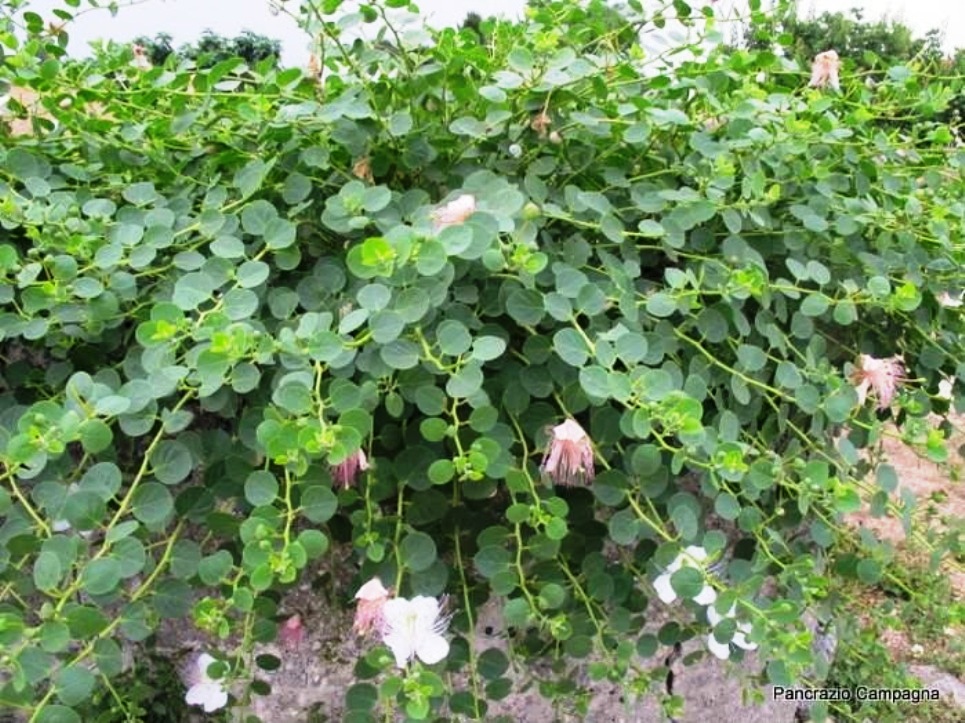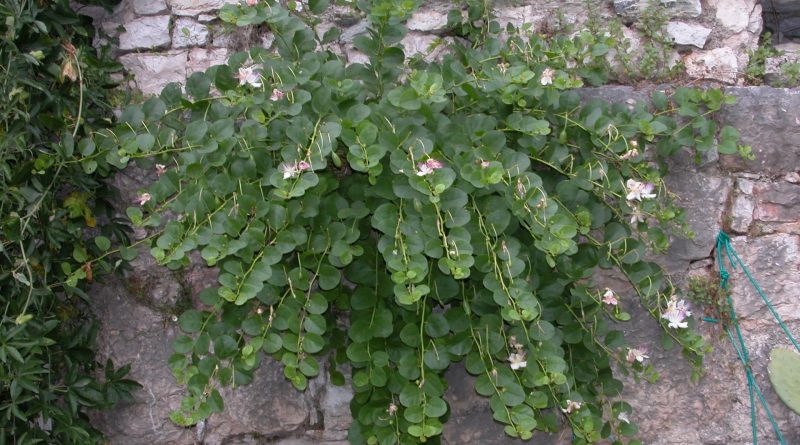Use of the caper
Use of the caper
Scientific name. Capparis spinosa L.
Family. Capparidaceae
Dialect name: chiappira, chiappari
Bushy perennial plant with woody roots and stems, first erect and then prostrate. The leaves are alternate, round in shape, petiolate and glaucous green in color. The margin is whole, with a wavy leathery consistency. The solitary flowers are inserted in the axil of the leaf, with a long petiole and composed of 4 pinkish-white petals and purplish-red stamens.
The fruits are the so-called gherkins (in the dialect “cucunci”) with an elongated shape, first green and then reddish when ripe and containing inside, many black seeds. The caper grows throughout the Mediterranean region with a preference for stony ground, walls, rocks and in all substrates with a strong calcareous content.
In the Sicilian hinterland areas it also grows in dry clayey environments, in very marginal areas and in road slopes. The plant is harvested in the summer.

Active principles
The active ingredients are found in the cortex
Property
Diuretic, antihemorrhoidal, astringent.
Internal use
Diuretic decoction: boil for 5 min. 200 gr of bark in 100 ml of water and consume 2 cups a day, one in the morning and one in the evening.
External use
Decongestant, for capillary fragility, anti-haemorrhoidal
Infusion: 100 gr of dried flowers or about 10 fresh flowers in 500 ml of water to be used in the form of a pack as a decongestant for the skin or in the treatment of capillary fragility.
Antihemorrhoidal oil: macerate 10 g of bark in 100 ml of olive oil for 10 days. Make local applications.

Maria Canzoneri

